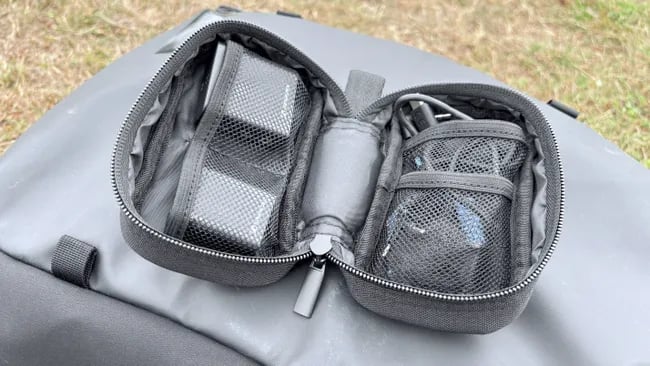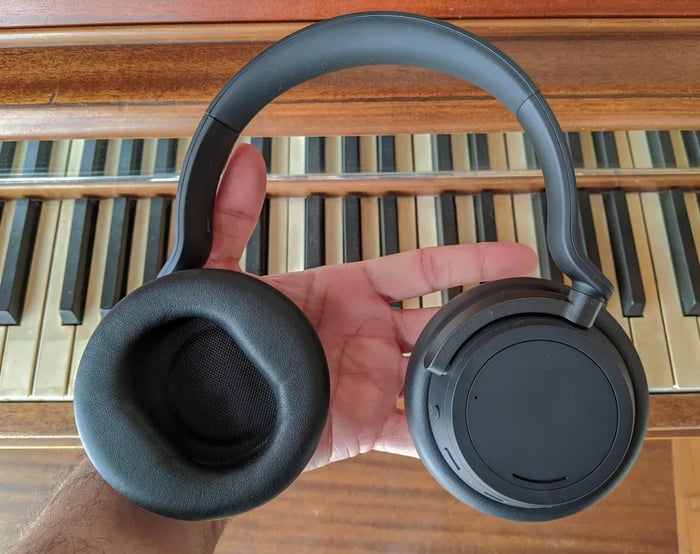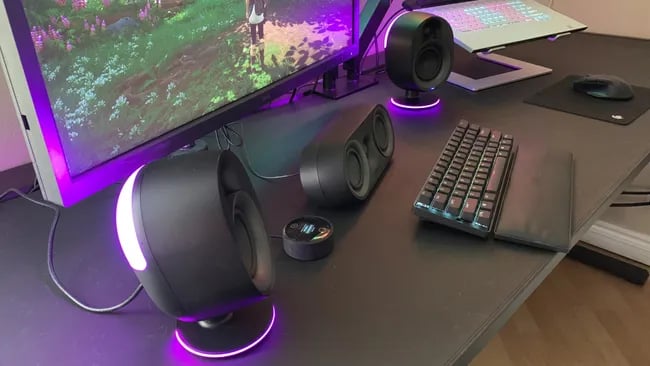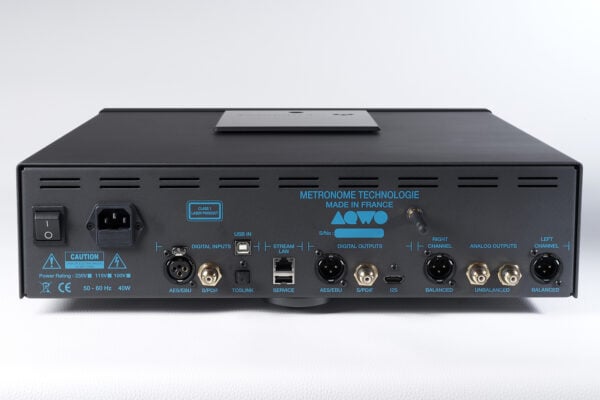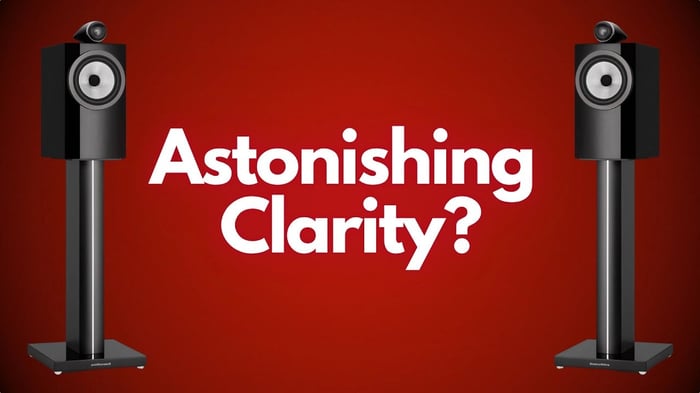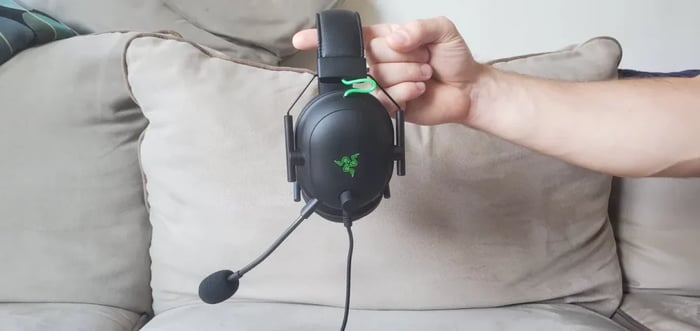
Razer BlackShark V2 Review: Lightweight Comfort Meets Premium Sound
Razer BlackShark V2 Review: Lightweight Comfort Meets Premium Sound
Experience lightweight comfort and high-quality sound with the Razer BlackShark V2 gaming headset, designed for esports and immersive gameplay.
When it comes to gaming headsets, comfort and sound quality hold equal weight in the balance. The Razer BlackShark V2, priced at about $100, gracefully meets both criteria—feeling feather-light on your head without sacrificing rich audio performance.
Offering multiple connection options via USB Type-A or a 3.5mm jack, alongside extensive microphone and sound customization, this headset is billed as the “ideal esports gaming headset.” For fans of THX Spatial Audio technology, the BlackShark V2 brings immersive 3D soundscapes that adapt depending on the game you’re diving into.
Razer BlackShark V2 Specifications
| Feature | Details |
| Driver Type | 50mm Razer TriForce Titanium dynamic drivers |
| Impedance | 32 Ohms |
| Frequency Response | 12 Hz – 28 kHz |
| Microphone Type | Razer HyperClear Cardioid, detachable |
| Connectivity | 3.5mm jack or USB Type-A |
| Cable Length | 5.9 feet / 1.8 meters |
| Weight | 0.6 lbs / 262 grams |
| Lighting | None |
| Software | Razer Synapse |
Design and Comfort: A Subtle Yet Stylish Shift
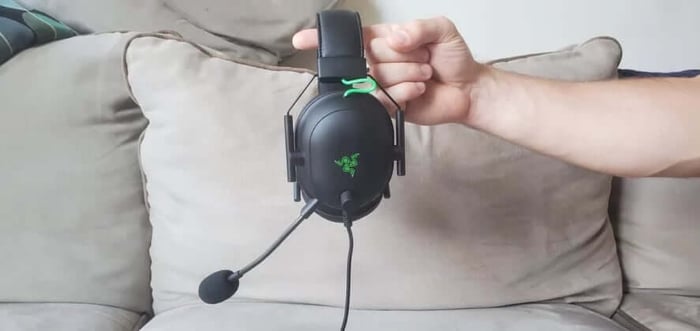
The original BlackShark was something of a wild child in the headset world, but the 2020 edition embraces a more refined, professional vibe. Gone is the helicopter-esque look, replaced by subtle touches of Razer’s iconic green—enough to remind you of the brand without screaming for attention.
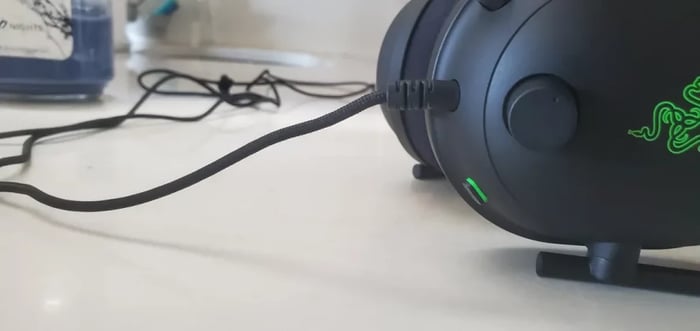
The green color remains in strategic places: logos on the earcups, the visible braided cable connecting the headband to each earcup, and the mute button’s base. The reduced metal and absence of excessive cabling make this headset much easier on the eyes.
One striking design feature is the headband’s frame—resembling open bars rather than a solid band—allowing the earcups to tilt inward and outward for a more personalized fit. While the headset isn’t foldable, you can slide the earcups down to reveal more of the cable, which adds a splash of visual interest. Personally, I’m a bit wary of exposed cables, fearing damage, but Razer assures that their Speedflex braided cable is built for daily durability.
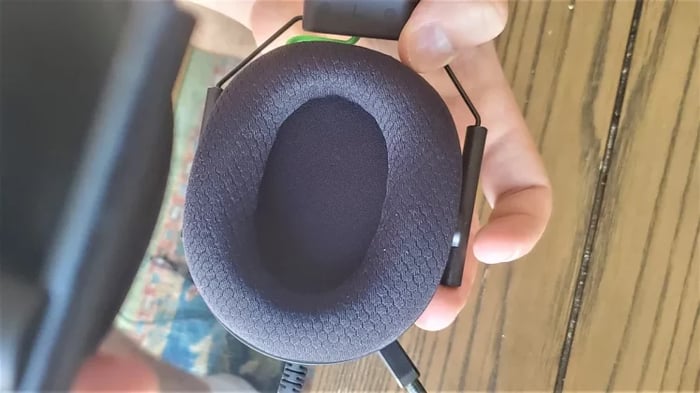
At first touch, you notice how incredibly light it feels—0.6 pounds, to be exact—comparable or lighter than competitors like SteelSeries Arctis 5 or HyperX Cloud II. The plastic build and absence of metal or flashy RGB lighting contribute to this sleek weight, which really helps when marathon gaming sessions stretch on.
The ear cushions use memory foam that’s softer and less dense than some rivals, wrapped in a breathable FlowKnit fabric designed to keep your ears cool. After hours in a humid room, I only felt slight dampness, which is pretty impressive. To prevent sound leakage, the inner ear pad lining is synthetic leather, measuring roughly 2.56 by 1.57 inches, snug enough to block external noise but comfy enough not to choke your ears.
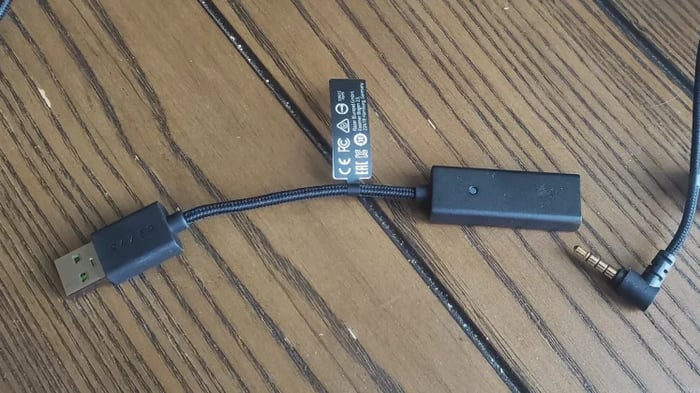
The headband sports plush padding beneath synthetic leather, which I barely noticed due to the headset’s lightness. Combined with the ear cushions, it felt like wearing nothing at all during long gaming stints.
On the left earcup, all hardware controls are conveniently placed: a tactile volume wheel with a center groove for easy adjustments, a mute button with a stylish green base, and the USB/microphone ports. The microphone is detachable and designed so you can’t insert it incorrectly, a small but thoughtful touch.
Though well laid out, I missed the option to toggle virtual 7.1 surround sound directly on the headset or through a USB controller—something HyperX Cloud II excels at.
The Titanium-Coated Drivers: Razer’s Audio Innovation
At the heart of the BlackShark V2’s sound are its 50mm Razer TriForce Titanium drivers. Unlike conventional single-port drivers that handle all frequency ranges together, these have three separate chambers for lows, mids, and highs, aiming for cleaner, richer sound with crystal-clear vocals and vibrant bass and treble.
The titanium coating makes the driver membrane lightweight yet stiff, allowing it to reproduce extreme high frequencies without distortion. This headset boasts a frequency response up to 28 kHz, surpassing competitors like the Arctis 5 (20 kHz) and Cloud II (25 kHz).
Immersive Audio Experience
I was genuinely impressed with the new drivers’ performance. They pump out powerful sound at moderate volume—typically, I kept it around 50% for gaming, music, and voice chats.
The audio was layered and vivid, from thunderous gunfire that echoed around me to the subtle rustle of leaves under crawling feet or rhythmic beats from ABBA tracks.
You can use the headset with a 3.5mm jack for consoles like PlayStation 4, Xbox One, Nintendo Switch, and mobile devices. For premium features including sound customization and THX Spatial Audio, connect via USB.
Testing Battlefield V with THX Spatial Audio off, the BlackShark V2 easily outperformed my laptop’s built-in speakers. Details popped out—the whisper of wind, crunching mud—and positional audio was sharp enough to pinpoint enemy locations. Explosions were loud and visceral, without distortion.
Though the synthetic leather ear pads prevent sound leakage, someone sitting six feet away still heard gunfire and background music at max volume. But at a comfortable 50% level, no sound escaped, and the tank shots still rattled me enough!
THX Spatial Audio is meant to deliver 360-degree sound immersion, deeper than virtual 7.1 surround, but in my experience, the effect was subtle and most beneficial only in the 18 games with dedicated Razer profiles.
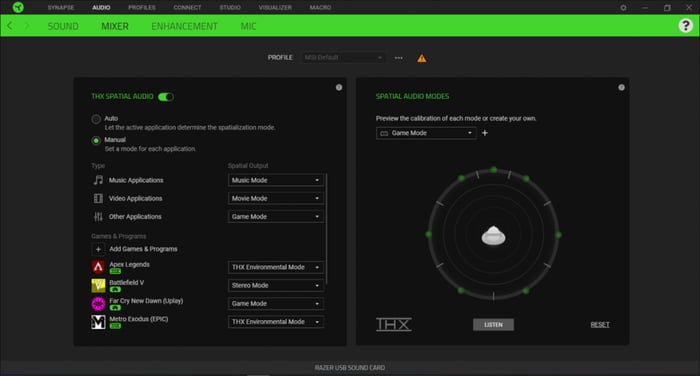
The headset introduces the first-ever THX Game Profiles that tailor audio to specific games. These profiles optimize soundscapes to enhance key gameplay elements—like footsteps and gunshots—while reducing distracting background noise. For instance:
- THX Environmental Mode enriches the overall sound environment.
- THX Competitive Mode zeroes in on sounds crucial for winning.
While these profiles tweak the EQ and speaker placement virtually, I found the audible difference modest—though in Apex Legends, the competitive mode muted irrelevant sounds, and the environmental mode made the audio fuller and more detailed.
Games like Metro Exodus showed slight volume boosts and enhanced echoes but nothing groundbreaking.
Razer noted that the THX profiles’ impact varies by game, with titles like Valorant and Destiny 2 benefiting the most.
Versatility Beyond Gaming
The BlackShark V2 also handled music and podcasts impressively, delivering accurate, layered sound. THX Spatial Audio slightly shifted music positioning—for example, The Strokes’ tracks felt like they were playing right in front of me rather than behind. However, I didn’t notice a significant enhancement when watching films with surround sound.
In general, this headset is a solid all-rounder for your favorite media.
Razer BlackShark V2 Microphone: Clear and Noise-Free
The detachable Razer HyperClear Cardioid microphone is a fresh addition to the BlackShark line. With noise suppression that blocks everything except your voice, it boasts a frequency range of 100 Hz to 10 kHz and a signal-to-noise ratio of 60 dB.
Compared to my PC’s built-in mic, voices came through clearer and less muffled. The HyperClear mic also did a superb job muffling background noise like TV sound or PC fan whirs. While it won’t warm your voice like top-tier standalone mics, it’s impressive for an integrated gaming headset.
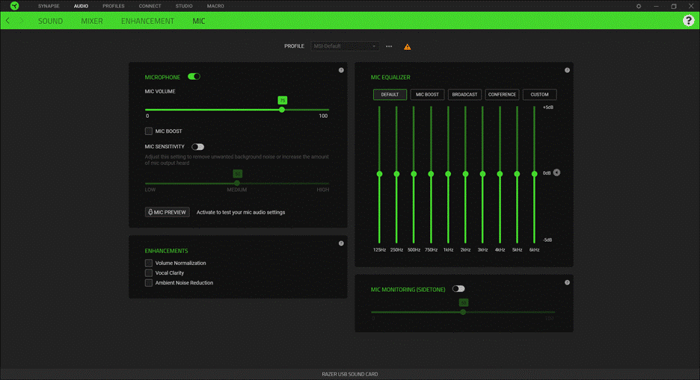
Using USB, Razer Synapse software lets you adjust mic volume and apply EQ presets tailored for streaming, conference calls, or mic boosting.
Features and Software: Customizing Your Sound
Alongside hardware mic controls, Razer Synapse unlocks wide-ranging audio tweaks when plugged in via USB.
You can toggle THX Game Profiles, adjust virtual speaker placement around your head, and modify their distance for refined positional audio.
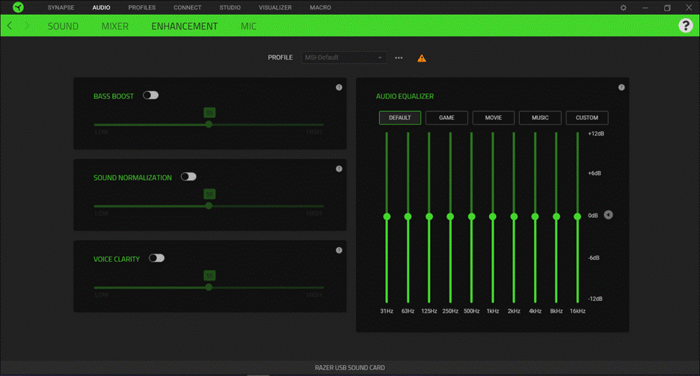
Additional options include:
- A general equalizer with bass boost, sound normalization, and voice clarity enhancements.
- Preset audio profiles like Default, Gaming, Mobility, Music, and a Custom profile allowing your personal sound signature.
Final Thoughts

The BlackShark V2 is a marked improvement over the original. While I can’t comment on the fit of the first model, this one’s light weight and soft padding make it a breeze to wear for hours. The titanium drivers deliver powerful, precise sound that punches above their price point.
Though stripped of luxurious materials like matte metal and dense cushions, and sporting a somewhat budget look, these headphones pack solid performance and comfort. Your mileage with virtual surround sound may vary, but THX Spatial Audio can truly elevate gaming experiences in supported titles such as Apex Legends. Razer promises more game profiles soon.
If you want alternatives, the SteelSeries Arctis 5 sits in a similar price range with RGB lighting and a ChatMix controller. For exceptional virtual surround, HyperX Cloud Orbit S with 3D sound and head-tracking reigns supreme—albeit at a much steeper price.
But if premium mic quality, flexible connectivity, and solid sound are what you seek, the BlackShark V2 is an excellent addition to any gaming setup.
"The lightweight design and titanium-coated drivers give BlackShark V2 a sound that’s both powerful and precise." — Reviewer
FAQ
- What connection options does the BlackShark V2 support?
It supports both USB Type-A and 3.5mm jack connections, making it compatible with PCs, consoles, and mobile devices. - Does the BlackShark V2 feature surround sound?
Yes, it offers virtual 7.1 surround sound via THX Spatial Audio, accessible when using USB connection. - Is the microphone detachable?
Yes, the HyperClear Cardioid microphone is removable for convenience and versatility. - How comfortable is the headset for long gaming sessions?
Very comfortable due to its lightweight design, memory foam cushions wrapped in breathable fabric, and soft headband padding. - Can I customize the sound settings?
Absolutely. Using Razer Synapse software, you can adjust EQ settings, mic volume, spatial audio profiles, and more.
Enhance your gaming space with style and sound—shop your favorite album cover poster at our store to complement your setup!
 | DISCOUNTGET 30% OFF*Use code on your next order:
|
* This post may contain affiliate links, meaning we earn a commission if you make a purchase through these links, at no additional cost to you.



